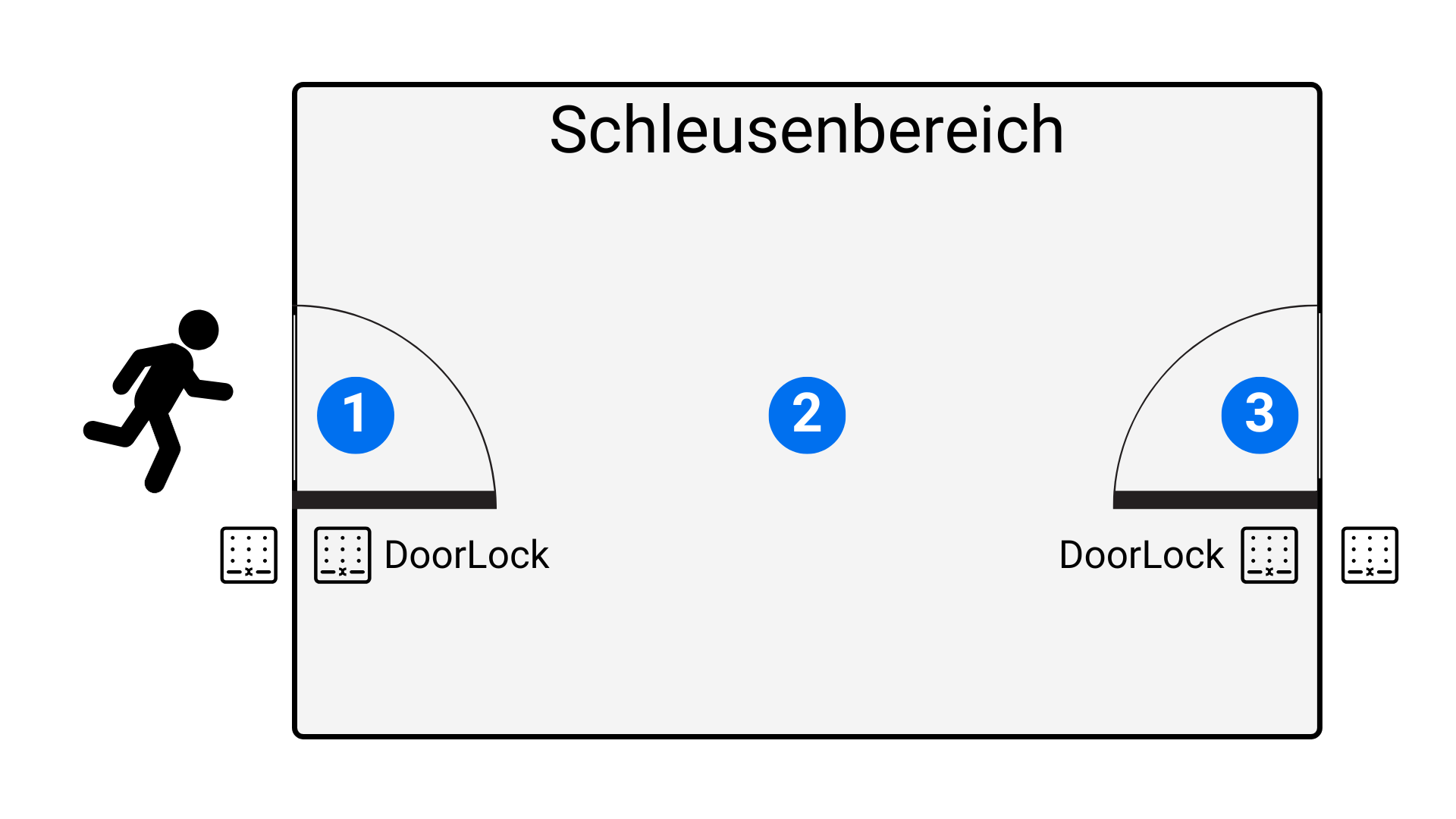In a world where digital threats make headlines every day, the physical security of companies must not be neglected. Especially in areas such as data centers, laboratories or sensitive company premises, it is crucial not only to focus on IT security, but also to strictly regulate physical access. This is precisely where two key Kentix technologies come into play: the anti-passback function and the lock function. But what exactly do these two technologies do and why do they together offer an unbeatable security solution?
What is the lock function?
Imagine you are entering an area with multi-level security. The interlock function ensures that only one door is open at a time. This ensures that only one person at a time enters the room and that no uncontrolled access is possible. Why is this so important? In high-security environments, it can have devastating consequences if several doors are opened at the same time and unauthorized persons gain access to sensitive areas. The interlock function is therefore ideal for facilities that require maximum protection – for example data centers, laboratories or research facilities.

An access gate(2) for separating people in data centers works by physically controlling access and ensuring that only one authorized person can pass through at a time. This is achieved by mechanical or electronic barriers such as turnstiles or sliding doors that only open when access authorization has been checked. The interlock prevents “tailgating”, i.e. the unauthorized entry of a second person, and logs every access to ensure complete traceability. This ensures the security and integrity of the data center. Various interlock concepts can be implemented with KentixONE, e.g. the room interlock often used in data centers with two individual doors, an interlock room with optical separation of persons in the interior.
Access gates and separation of persons are important in data centers:
- to ensure security by only granting access to authorized persons,
- to ensure controlled access and prevent tailgating,
- enable the logging of access attempts,
- Compliance with regulations that require strict access controls,
- Protecting the infrastructure from physical threats.
These measures ensure the integrity and protection of sensitive data andsystems and can be flexibly implemented with KentixONE to suit the respective lock concept. Our sales team will be happy to answer any questions you may have about implementation.
The anti-passback function: more than just access control
Now you might ask yourself: “Isn’t the lock function enough?” This is where the anti-passback function comes into play. This prevents the misuse of access tokens. An example: Imagine someone passes on their access token to another person after they have entered an area to give them access as well. The anti-passback function ensures that a token can only be used once before the person has left the area. The result? Manipulation and unauthorized access are effectively prevented.
Why the combination is unbeatable
The lock function and anti-passback work together perfectly to ensure seamless security. How does it work? While the interlock function sets physical barriers, the anti-passback function ensures that only authorized persons cross the barriers. It is therefore not enough to simply have access – access must also be correct and in accordance with the specified rules. This ensures maximum control and prevents any form of misuse.
Conclusion: The perfect solution for maximum security
The anti-passback and lock function are not just technical features – they are a crucial part of a comprehensive security concept that offers modern companies the security they need. At Kentix, we develop advanced solutions that are tailored to your specific requirements and provide optimum protection for your infrastructure.



